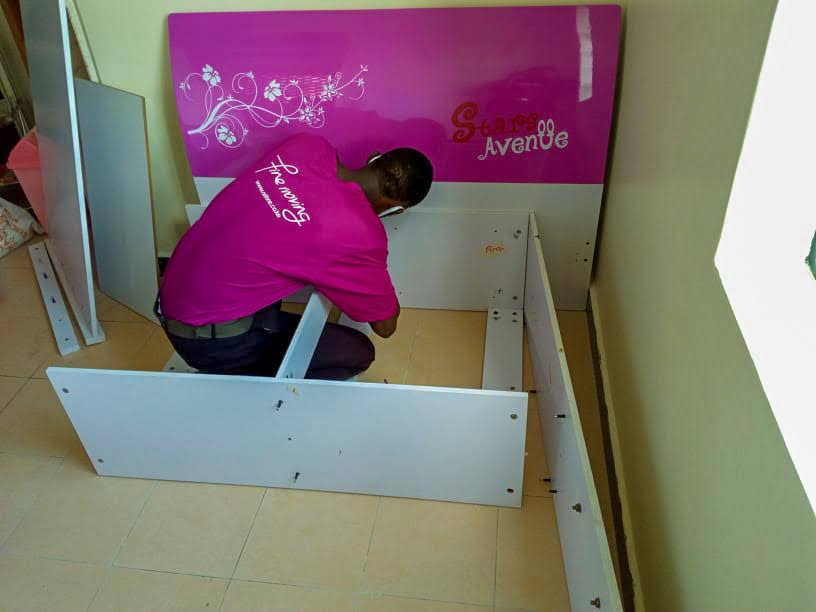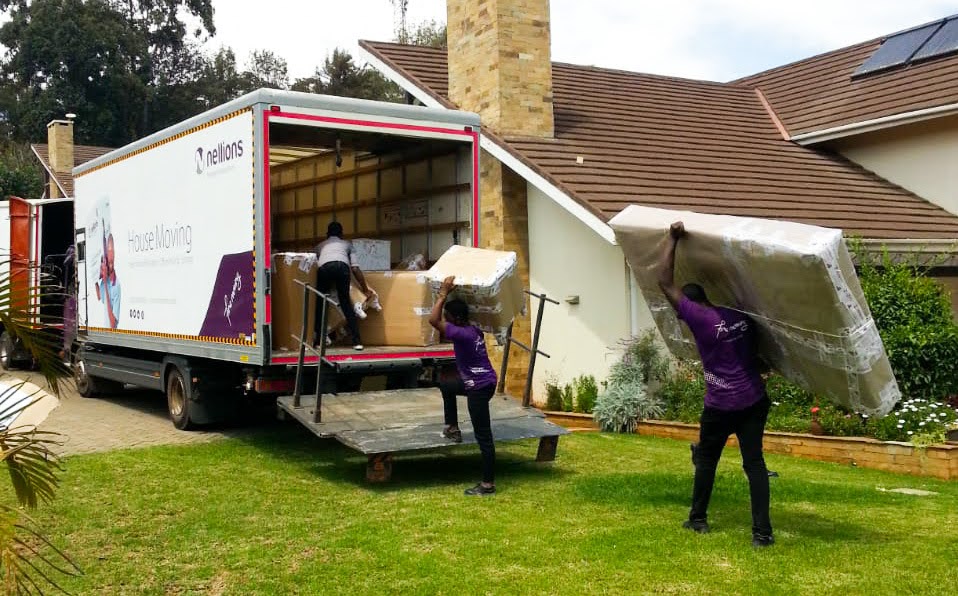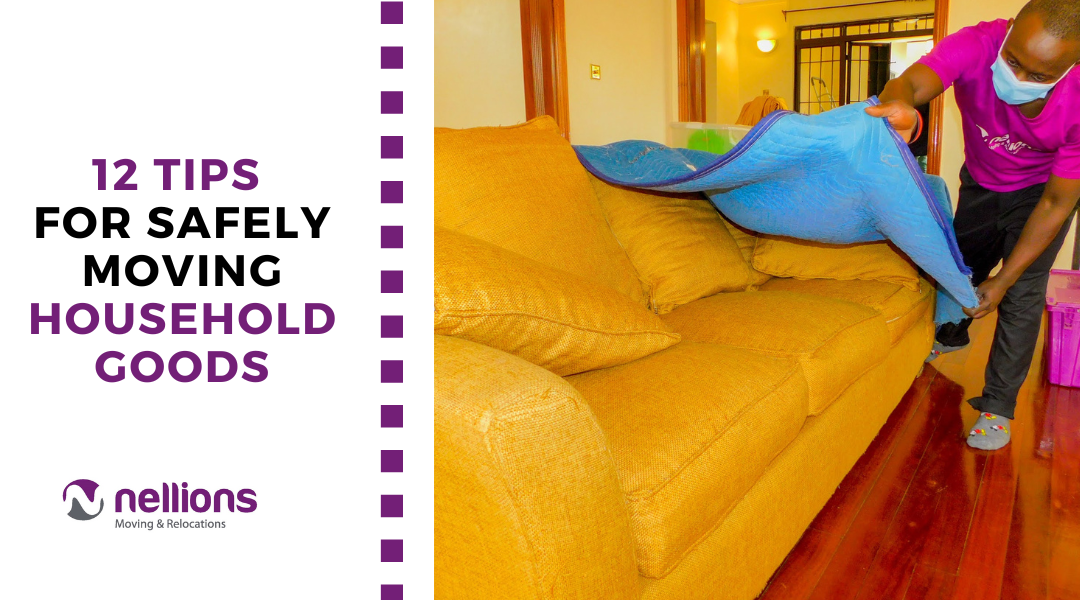Moving to a new home can be exciting but daunting, especially when relocating furniture. Ensuring the safe transportation of your cherished possessions is paramount during the moving household furniture process.
To alleviate the stress and potential risks involved, this comprehensive guide offers essential tips for a smooth and secure furniture relocation. Proper packing materials and techniques are vital to safeguard your furniture during transit. Sturdy moving boxes, padding, and protective covers will shield your items from scratches, dents, and other damage.
Labeling each box and creating an inventory list will aid in organized unpacking at your new destination. Hiring professional movers or even enlisting the help of friends and family can significantly reduce the physical strain and ensure expert furniture handling.
This mover’s guide aims to provide valuable tips and insights to help make your furniture relocation smooth and secure.
1. Create a Moving Plan
Developing a comprehensive moving household furniture plan is essential for a successful relocation. Consider the following steps to get to create an effective plan:
- Start by establishing a timeline for your shift. This will help you stay organized and complete each task promptly. Consider lease or closing dates, work schedules, and other commitments that may affect your timeline.
- Moving household furniture expenses can quickly add up, so it’s crucial to establish a budget. Consider costs such as packing materials, hiring professional shifters, renting a truck, or any other expenses that may arise during the process. A very clear budget will help you make informed decisions and avoid financial surprises.
- Evaluate the logistics of your shift. Determine whether you’ll require professional shifters or prefer to handle the shift yourself. Research reputable moving companies read reviews, and compare quotes to make an informed choice. If you decide to do it yourself, plan the logistics of renting a moving truck and gathering the necessary equipment.
2. Declutter and Organize
Before packing your furniture, take the opportunity to declutter and organize your belongings. Here’s how you can approach this step:
- Go room by room and assess each item. Separate them into categories such as keep, donate, sell, or dispose of. Be mindful of items that hold sentimental value but may not fit into your new space.
- Consider donating or even selling items that you no longer need or use. This not only helps others in need but also reduces the overall volume of your shift. Host a garage sale, list items online, or donate them to local charities. It’s a win-win situation!
- For items that are no longer functional or beyond repair, dispose of them responsibly. Research local recycling centers or waste management facilities that properly handle these items. By doing so, you contribute to a greener environment.
- Once you have decluttered, it’s time to organize your packing process. Gather packing supplies such as boxes, tape, bubble wrap, and markers. Label each and every box with its contents and the room it belongs to, making unpacking a breeze.
3. Take Measurements: Ensuring a Smooth Fit
One of the most common challenges during a shift is discovering that your beloved furniture won’t fit through doorways, hallways, or staircases in your new home. To avoid such setbacks, taking measurements is crucial. Here’s what you should do:
Measure Doorways, Hallways, and Staircases: Before packing, take accurate measurements of your new home’s entryways and passages. Include the width, height, and depth of each doorway, hallway, and staircase. Note down these measurements to refer to later.
Measure Your Furniture: Now that you have the measurements of your new home’s spaces, it’s time to measure your furniture. Take note of the dimensions of each piece, including height, width, and depth. Pay extra attention to any items that might be bulky or have unconventional shapes.
Compare Measurements: Compare the measurements of your furniture with those of your new home’s spaces. This step will help determine if your furniture will fit comfortably through the doorways, hallways, and staircases. Consider any tight corners, narrow passages, or low ceilings that may pose challenges during the shift.
Evaluate Options: If you find that certain pieces of furniture won’t fit through your new home’s spaces, consider alternative options. This could involve disassembling the furniture, removing doors temporarily, or even seeking professional assistance. Planning can save you from potential headaches on moving days.
4. Gather Packing Supplies: Ensuring Safe Transportation
Once you have ensured that your furniture will fit through the designated spaces, it’s time to gather all the necessary packing supplies. Here’s what you’ll need:
Sturdy Boxes: Choose sturdy boxes of various sizes to accommodate different items. Ensure they are in good condition, with no tears or weak spots. Reinforce the bottoms with packing tape for added strength.
Packing Tape: Invest in high-quality packing tape to securely seal your boxes. This will prevent accidental openings during transit and protect your furniture from dust or damage.
Bubble Wrap and Furniture Blankets: To shield your furniture from scratches, dents, or breakage, use bubble wrap or furniture blankets. Wrap fragile items individually and cover larger pieces entirely. Secure the wrapping with packing tape or stretch wrap.
Markers for Labeling: Labeling your boxes clearly will save you time and effort during unpacking. Use markers to indicate the contents of each box and the room it belongs to. This will make placing them in their appropriate spots in your new home easier.
5. Disassemble Furniture
Disassembling large furniture before the shift can save you significant time and effort. Breaking down items such as beds, tables, and bookshelves can make them more manageable to transport and maneuver through narrow hallways or doorways. Here are a few steps to help you through the disassembly process:
Prepare: Gather the necessary tools, such as screwdrivers, Allen wrenches, and pliers. It’s also helpful to keep a small bag or container nearby to store any hardware or screws.
Labeling: To avoid confusion during the reassembly process, label each bag or container with the corresponding furniture piece’s name or number. Attach the labeled bag securely to the furniture using tape, ensuring it doesn’t get misplaced.
Documentation: Taking pictures or making notes of the disassembly process can be immensely helpful when it’s time to reassemble the furniture in your new home.
By disassembling your furniture, you make moving household furniture more manageable and minimize the risk of damage during transit.

6. Protect Furniture
When it comes to safeguarding your furniture, prevention is key. Here are some effective ways to protect your valuable possessions during the moving household furniture process:
Wrap Fragile Items: Fragile or delicate furniture pieces like glass tables or mirrors should be wrapped with bubble wrap or furniture blankets. Cover the item completely, ensuring all corners and edges are adequately protected. Secure the wrapping with packing tape to keep it in place.
Corner and Edge Protectors: Cardboard corners or edge protectors are essential for safeguarding your furniture from scratches, dents, or any impact during the shift. These protective covers can easily be attached to the vulnerable areas of your furniture, such as corners, edges, or protruding parts.
Blankets and Padding: Utilize furniture blankets or padding to provide extra protection for larger items such as sofas, dressers, or armoires. Cover the entire piece, tucking in the edges securely.
This will help prevent some scratches or damage caused by friction or accidental bumps. By wrapping and protecting your furniture properly, you can minimize the risk of unwanted surprises when you reach your new home.
7. Secure Drawers and Doors
One of the primary concerns when moving household furniture is preventing drawers and doors from opening during transportation. The last thing you want is to find your belongings scattered inside the furniture or damage caused by unexpected openings. To avoid such situations, here are a few simple steps you can take:
Tape It Up: Secure drawers and doors using packing tape before moving. Gently wrap the tape around the furniture, firmly holding the drawers or doors in place. This will provide an added layer of protection and prevent any surprises when you arrive at your destination.
Furniture Straps: Consider using furniture straps for larger furniture items or those with particularly heavy drawers. These adjustable straps can be fastened around the furniture, creating a tight hold that prevents shiftting or opening during transit.
Furniture straps are readily available at most hardware stores and can be a valuable investment in ensuring the safety of your belongings.
8. Use Proper Lifting Techniques
Lifting heavy furniture can pose a risk of injury if not done correctly. To protect yourself and your loved ones from unnecessary strains or accidents, follow these guidelines for proper lifting techniques:
Bend and Lift with Your Legs: When lifting heavy items, always remember to bend your knees and use the strength of your legs, not your back. By squatting down and keeping your back straight, you distribute the weight more evenly and reduce strain on your spine. Maintain a firm grip on the furniture and lift slowly and steadily, avoiding sudden jerks or twists.
Enlist Help: Avoid asking for assistance when dealing with heavy or bulky furniture. Reach out to friends, family, or consider hiring professional shifters who are experienced in handling heavy items. The extra pair of hands not only ease the physical burden but also minimizes the risk of accidents or damage to your furniture.
9. Load the Moving Truck Strategically
When it comes to loading the great moving truck, strategic planning is key. Start by placing heavy furniture items at the bottom of the truck. This will help maintain stability and prevent them from shifting during transit.
Additionally, secure these items with straps or ropes to keep them in place. By distributing the weight evenly, you’ll ensure a balanced load, making it easier to maneuver the truck and reducing the risk of damage to your furniture.

10. Protect Floors and Walls
One common concern when moving furniture is the potential for damage to floors and walls. Take proactive measures to protect your home to avoid unsightly scratches or dents. Lay down protective covers or moving blankets on the floors and walls of your old and new home.
This simple step will provide an extra cushioning layer and prevent accidental damage while moving heavy furniture in and out. Remember, prevention is always better than repair.
11. Take Inventory
Before embarking on your furniture relocation journey, create a detailed inventory of all your belongings. This inventory will help you keep track of your items and ensure nothing gets lost when moving. Take photographs or videos of each piece of furniture, noting any damage or wear.
You can also label your boxes and create a corresponding list to make unpacking easier. An inventory will ease your mind and assist with any insurance claims if needed.
12. Insurance Coverage
Protecting your furniture when shifting is of utmost importance. Consider obtaining insurance coverage specifically for your furniture. Start by checking your existing homeowner’s insurance policy to see if it covers any damages that may occur during relocation. Suppose it doesn’t contact reputable moving household furniture companies and inquire about their coverage options. Investing in insurance will also give you peace of mind, knowing that your furniture is protected throughout the moving process.
Conclusion
When safely moving household furniture, following these tips can make the process smoother and minimize the risk of damage. First, planning and organizing the move is crucial, ensuring you have the necessary equipment and supplies.
Properly disassembling furniture and securing loose parts can prevent accidents during transit. Protecting your furniture with padding, blankets, and plastic wrap protects it against scratches and dents.
Finally, enlisting the help of professional movers can make the task more manageable and ensure proper lifting techniques are employed. By implementing these tips, you can ensure a successful and stress-free furniture relocation.


